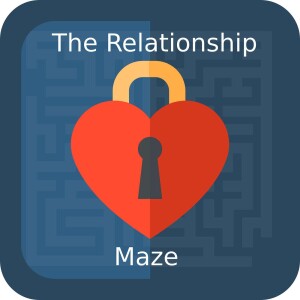
Why it is so hard to leave an abusive relationship
 2022-03-07
2022-03-07
Send us a text
If you know someone who is in an abusive relationship, you may wonder why they are putting up with the abuse and just don't leave. You may also ask yourself this question if you are currently in a relationship that is abusive.
Domestic abuse is a pattern of behaviour in relationships where one partner maintains power and control over the other. The abuse consists of physical, emotional, sexual, economic, psychological or spiritual acts that threaten the partner. The partner who is at the receiving end of abuse is put down, belittled, intimidated, frightened, manipulated, hurt, shamed, blamed or injured.
Domestic abuse occurs across gender, socioeconomic, ethnic, sexual, religious or cultural boundaries. Man can abuse women and women can abuse man. The same goes for anybody who identifies as non-binary.
In today's episode we look at two aspects of domestic abuse: the abuse cycle and the trauma bond. We also look at the connection between an insecure attachment style and being in an abusive relationship. We use the term 'victim' or 'survivor' (this term emphasises the capacity of people who are the receiving end of domestic abuse to develop strategies that help them manage the abuse).
Abuse in relationships usually unfolds gradually. The perpetrator is mostly experienced as charming, caring and loving in the early stages of the relationship.
In the abuse cycle we identify four typical phases: the tension building phase, the crisis point/assault, reconciliation/honeymoon phase and the return to 'normality'/calm phase.
The glue that binds together perpetrator and victim is the trauma bond (also called Stockholm Syndrome). When in a situation that is experienced as dangerous our natural instinct is to turn towards the person closest to us for soothing. In abusive relationships that very person is also the source of the threat and fear. In the emotional confusion this causes for victims/survivors, they become increasingly anxious and more and more dependent. In particular in the reconciliation phase of the abuse cycle when the victim experiences 'love bombing' by the perpetrator the victim feels soothed and reaffirmed again by their partner. There is the perpetual hope that everything will be alright again eventually.
Survivors of domestic abuse tend to be in a 'freeze' state of the fight/flight/freeze response of the automatic nervous system. The safest way to survive the abuse is to 'play dead': to shut down, dissociate , deny or appease. A nervous system that is in a chronic freeze response often leads to a number of physiological manifestations: chronic headaches, stomach pain, high blood pressure, fatigue, depression and anxiety and many other PTSD (post traumatic stress disorder) symptoms.
S
Contact us for information about individual counselling/psychotherapy, couples therapy, clinical supervision or CPD training.
Tom's website
Angela's website
Struggling with a lot of conflict and arguments in your relationship? Learn about communicating effectively and addressing common relationship problems in our Stop Arguing, Start Loving mini course.
Learn everything you always wanted to know about building and maintaining loving relationships in our comprehensive course The Relationship Maze, starting with understanding yourself in relationships to understanding your partner and understanding what makes for a successful relationship. We look at common causes of relationship problems and offer solutions. Learn how to address relationship problems and questions without breaking up.
More Episodes
 2022-10-10
2022-10-10
 2022-10-03
2022-10-03
 2022-09-26
2022-09-26
 2022-08-08
2022-08-08
 2022-07-11
2022-07-11
Create your
podcast in
minutes
- Full-featured podcast site
- Unlimited storage and bandwidth
- Comprehensive podcast stats
- Distribute to Apple Podcasts, Spotify, and more
- Make money with your podcast
It is Free
- Privacy Policy
- Cookie Policy
- Terms of Use
- Consent Preferences
- Copyright © 2015-2024 Podbean.com




